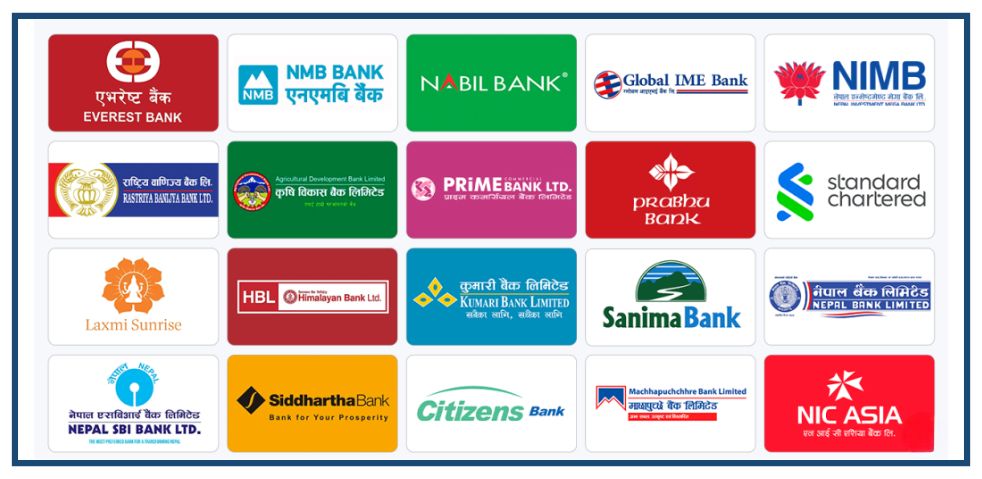Commercial banks are the most common and widely recognized financial institutions in Nepal and are classified as Class A institutions. As of mid-January 2025, 20 commercial banks are operating in the country.
Commercial banks are the backbone of the banking system in Nepal and have the largest share of the financial market. They provide services to the general public, including both large companies and individual customers. These banks offer a wide range of services, including:
- Deposits: They offer individuals and businesses savings accounts, current accounts, and fixed deposits.
- Loans: They provide personal loans, home loans, business loans, and educational loans, among others.
- Foreign Exchange Services: They deal with foreign currency exchange, facilitating both international trade and travel.
- Credit Facilities: They offer credit cards, debit cards, and other forms of credit to customers.
The banking history of Nepal began with the establishment of Nepal Bank Limited in 1937 A.D. (1994 B.S.). It was the first commercial bank in the country, jointly owned by the government and the general public.
Commercial banks are regulated by the Nepal Rastra Bank (Central Bank of Nepal) and must meet strict capital and operational requirements. There are four types of banks categorized by Nepal Rastra Bank as follows:
-
Class A – Commercial Banks
List of Commercial Banks in Nepal
Defunct Commercial Banks (No longer in Operation)
13 commercial banks are no longer in operation (defunct) as they have either merged or been acquired to form stronger institutions. This process was initiated by Nepal Rastra Bank to strengthen the banking sector, enhance stability, improve customer service, and increase competitiveness in the market.
Capital requirements of the Commercial bank in Nepal
To ensure the stability and resilience of the banking sector, NRB has established specific capital requirements that these banks must meet.
Minimum Paid-Up Capital
NRB mandates that all commercial banks maintain a minimum paid-up capital of NPR 8 billion. This requirement ensures that banks have a solid financial foundation to support their operations and absorb potential losses.
Capital Adequacy Ratios
Beyond the paid-up capital, commercial banks must comply with capital adequacy ratios as outlined in the NRB’s Capital Adequacy Framework:
-
Core Capital (Tier 1) Ratio: A minimum of 8.5% of risk-weighted assets.
-
Total Capital Adequacy Ratio (CAR): A minimum of 11% of risk-weighted assets, which includes both Tier 1 and Tier 2 capital.
These ratios ensure that banks possess sufficient capital to cover various risks and continue operating effectively during financial stress.
By meeting these capital requirements, commercial banks in Nepal contribute to the overall health and stability of the country’s financial system.


